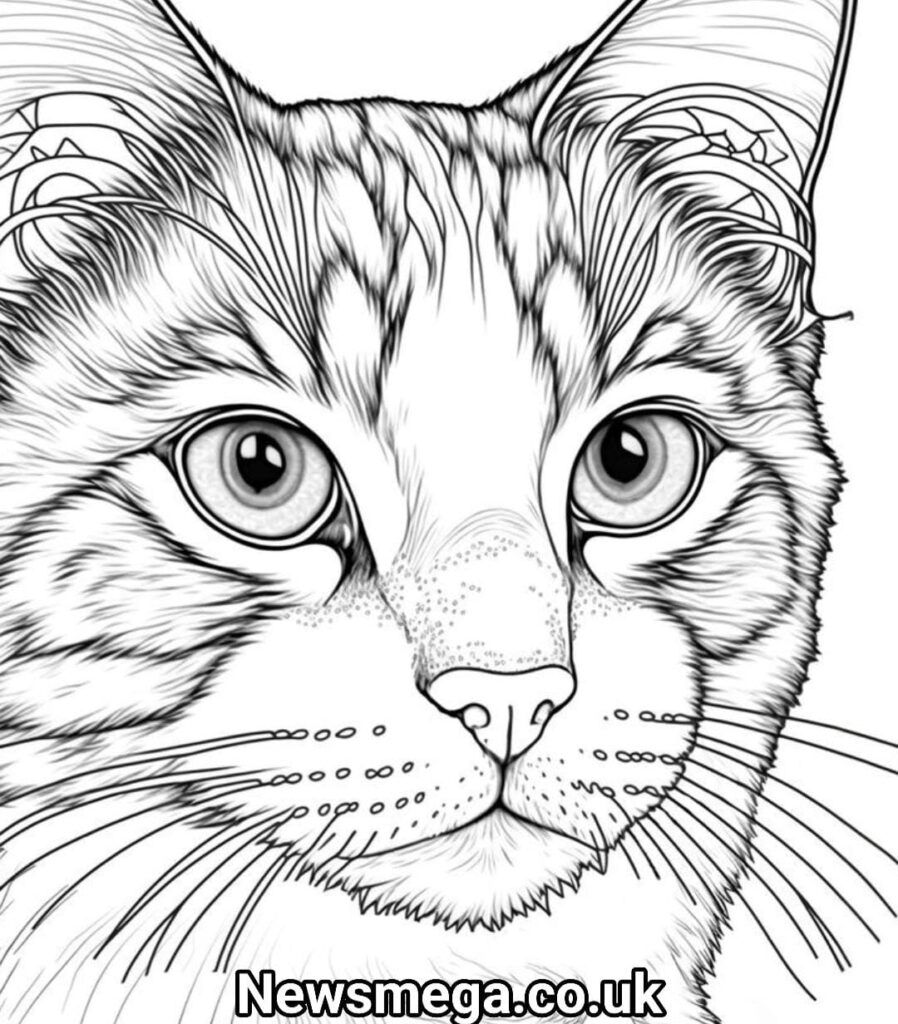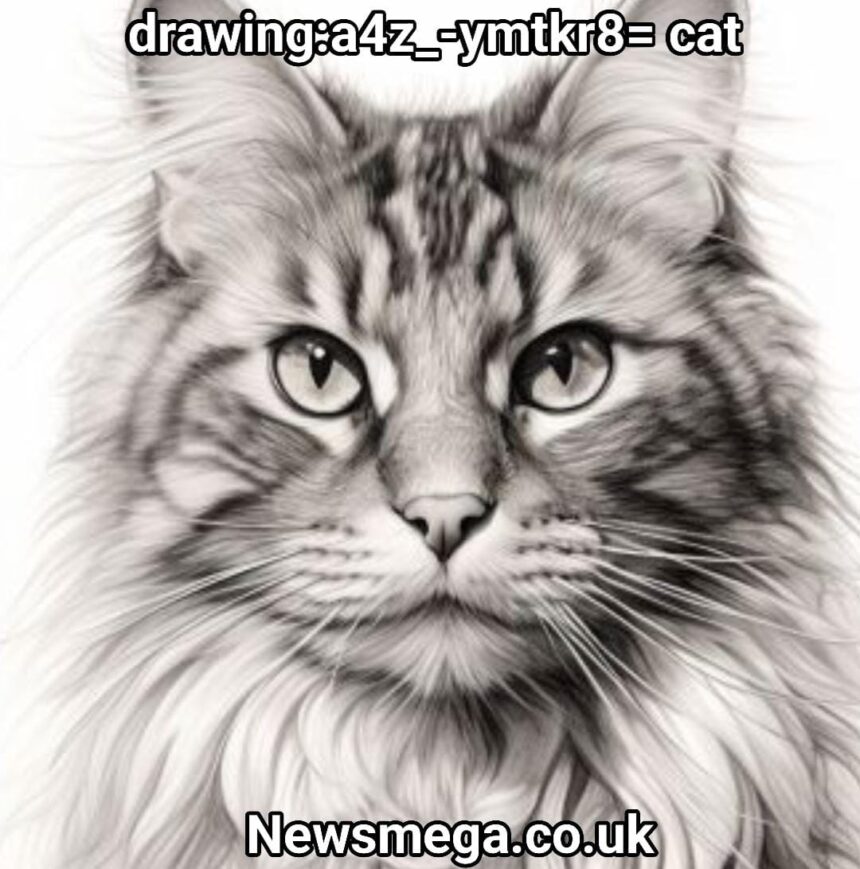Drawing a cat is not merely an exercise in capturing its physical features on paper; it’s about conveying its essence, grace, and personality through art. Whether you’re a novice artist learning the basics or an experienced illustrator looking to refine your skills, mastering the art of drawing cats involves understanding their anatomy,drawing:a4z_-ymtkr8= cat practicing various drawing techniques, and infusing your illustrations with creativity and emotion. This comprehensive guide explores the intricacies of drawing cats, providing insights into anatomy, techniques, tools, common challenges, and tips for creating realistic and expressive cat drawings.
Understanding Cat Anatomy and Proportions
Before you start drawing, it’s crucial to develop a solid understanding of cat anatomy and proportions. Cats have a distinct skeletal structure and muscular system that influence their appearance and movement. Begin by studying the basic shapes that make up a cat’s body—a circle for the head, an oval for the body, and elongated triangles for the ears. These foundational shapes serve as a framework for establishing proportion and capturing the overall posture of the cat.
When sketching the cat’s head, pay close attention to the placement and size of key features such as the eyes, nose, and mouth. Cats’ eyes are particularly expressive, ranging from large and round to narrow and slanted, depending on their breed and mood. Observing real cats or using high-quality reference images can provide valuable insights into these details and help you create more accurate and lifelike drawings.
Understanding proportion is essential for creating realistic cat drawings. Cats have a specific ratio of body length to leg length, drawing:a4z_-ymtkr8= cat which varies among breeds and ages. Pay attention to these proportions as you sketch, ensuring that the limbs and torso are correctly sized relative to the head and tail. Practice drawing cats from different angles to develop a three-dimensional understanding of their form and anatomy.
Techniques for Capturing Cat Characteristics
Sketching and Shading Techniques
Sketching forms the foundation of any drawing, including cat illustrations. Begin with light, loose strokes to outline the basic shapes and structure of the cat. Use a range of pencils from 2H (hard) for initial sketches to 6B (soft) for darker shading and defining details. Vary your pencil pressure to create different shades and textures, particularly when depicting areas such as the cat’s face, ears, and paws.
Shading is crucial for adding depth and dimension to your cat drawings. Observe how light falls on the cat’s fur and use shading techniques such as hatching, cross-hatching, and stippling to create texture and volume. Pay attention to the direction of fur growth and use short, controlled strokes to mimic the softness and density of cat fur. Layering different shades of pencil can help build up layers of fur, enhancing the realism and tactile quality of your drawing.
Focus on Expressive Eyes
The eyes are often the focal point of any animal drawing, including cats. Cats’ eyes are known for their mesmerizing gaze and ability to convey a wide range of emotions. To capture the essence of a cat’s eyes, pay close attention to their shape,drawing:a4z_-ymtkr8= cat size, and positioning within the face. Use shading to create depth and intensity within the eyes, focusing on highlights and shadows to enhance their expressiveness. Experiment with different pencil techniques to depict the reflective quality of cat eyes, making them appear alive and engaging.
Detailing Fur and Texture
Cat fur presents a unique challenge due to its softness, density, and varied texture. Start by sketching the overall texture of the fur using light, feathery strokes with your pencil. Pay attention to the cat’s coat pattern and markings, whether it’s a solid color, tabby stripes, or a calico mix. Use erasers or blending tools to soften edges and create smooth transitions between light and dark areas of fur.
To achieve a realistic fur texture, observe how light interacts with the cat’s fur and use shading to create volume and depth. Layer different shades of pencil to build up layers of fur, following the natural direction of fur growth and the flow of patterns. Take your time to depict subtle variations in fur color and texture, ensuring that each stroke contributes to the overall realism and aesthetic appeal of your cat drawing.
Tools of the Trade: Choosing the Right Materials
Selecting the appropriate drawing materials is crucial for achieving quality cat drawings. Invest in high-quality pencils ranging from hard (2H) for initial sketches to soft (6B) for shading and detailing. Choose smooth, heavyweight paper that can withstand multiple layers of pencil without buckling or tearing. Experiment with blending tools such as tortillons or blending stumps to achieve seamless transitions between light and shadow, enhancing the realism and depth of your cat illustrations.
In addition to pencils and paper, consider using erasers to create highlights within the fur and refine details in the cat’s features. Experiment with different eraser techniques, such as kneaded erasers for lifting graphite and creating soft edges, or precision erasers for detailed corrections and highlights. The right tools can significantly impact the overall quality and visual appeal of your cat drawings, allowing you to achieve lifelike results that capture the essence of these graceful creatures.

Common Mistakes and How to Avoid Them
Like any artistic endeavor, drawing cats comes with its own set of challenges and common pitfalls. By being aware of these mistakes and learning how to overcome them, you can improve your drawing skills and create more compelling cat illustrations.
Proportion Errors
One of the most common mistakes in cat drawing is misjudging proportions. Cats have a unique body structure, with proportions that vary depending on their breed, age, and posture. To avoid proportion errors, start by sketching basic shapes and continually compare your drawing to reference images or real-life cats. Pay attention to the relative sizes of different body parts, such as the head, ears, and limbs, to ensure accuracy and realism in your drawings.
Overworking the Drawing
Knowing when to stop adding details is crucial in cat drawing. Overworking a drawing can lead to muddy textures, loss of clarity, and a lack of focus on essential features. Take breaks periodically to step back and assess your progress with a fresh perspective. Focus on capturing key details that convey the cat’s personality and characteristics without overwhelming the composition with unnecessary elements. Remember that simplicity can often enhance the impact of your drawing, allowing viewers to appreciate the beauty and elegance of the cat without distractions.
Conclusion
Drawing cats is both a challenging and rewarding artistic pursuit that allows you to explore creativity, hone your skills, and capture the unique qualities of these beloved animals. By understanding cat anatomy, practicing various drawing techniques,drawing:a4z_-ymtkr8= cat and selecting the right materials, you can create realistic and expressive cat illustrations that resonate with viewers. Each drawing represents an opportunity to evoke emotion, tell a story, or simply celebrate the beauty of cats through art.
Also read this; Exploring the World of Wekwakpraui
FAQs About Drawing Cats
Q: How can I improve my shading technique for cat drawings?
A: Practice shading gradients from light to dark using different pencil pressures and blending tools. Experiment with cross-hatching and stippling techniques to create texture and depth within the cat’s fur. Observe how light interacts with the cat’s fur and use shading to create volume and realism.
Q: What are some beginner-friendly exercises to improve cat drawing skills?
A: Start by sketching basic shapes and focusing on capturing the overall form and proportions of cats. Practice drawing cats from different angles and observing their anatomy and movement. Experiment with shading and texture to enhance realism and depth in your drawings.
Q: How important is it to use reference images when drawing cats?
A: Reference images provide valuable guidance for understanding cat anatomy, fur textures, and markings. They help ensure accuracy and realism in your drawings, allowing you to capture the unique characteristics of cats more effectively. Take time to study reference images and observe real cats to improve your drawing skills and techniques.
By incorporating these insights into your practice and embracing the challenge of drawing cats, you’ll enhance your artistic abilities and create artworks that capture the beauty and spirit of these enchanting creatures. Whether you’re drawing for pleasure or pursuing art professionally, each cat drawing represents an opportunity to connect with viewers and celebrate the timeless art of animal illustration






